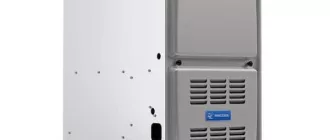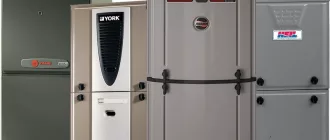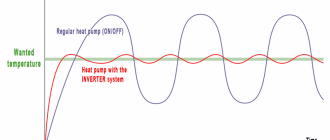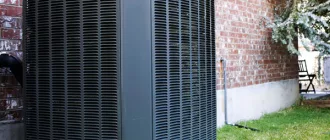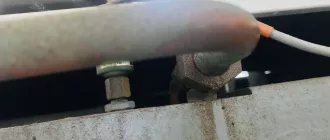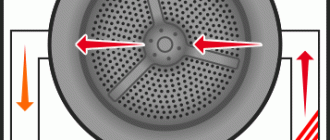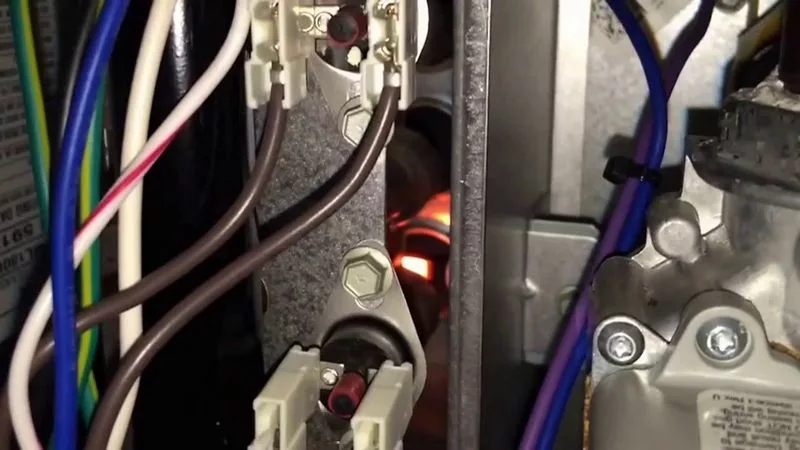
Furnace Sequence of Operation: A Step-by-Step Breakdown
Understanding the furnace operation is crucial for maintaining optimal performance and ensuring the longevity of your heating system. Every furnace follows a specific sequence of operation, which involves a series of steps that allow it to function efficiently and provide comfortable temperatures in your home. In this ultimate guide, we break down the furnace sequence of operation in a step-by-step manner, unraveling the intricate process behind your heating system.
First and foremost, the furnace sequence of operation begins with the thermostat. Once the thermostat senses that the room temperature has fallen below the desired setting, it sends a signal to the furnace to start the heating process. This signal triggers a chain of events that ultimately leads to the ignition and combustion of fuel.
Next, the furnace’s primary gas valve opens, allowing natural gas or propane to flow into the combustion chamber. Simultaneously, the draft inducer motor starts, creating a draft in the chamber to ensure proper airflow. This controlled air supply is vital for efficient combustion.
As the gas enters the combustion chamber, the furnace’s ignition system activates. This can be a standing pilot light, a hot surface igniter, or an electronic ignition device. The ignition system ignites the fuel, creating a flame inside the combustion chamber. This flame provides the necessary heat to warm the air that will be circulated throughout your home.
Once the flame is established, the furnace’s blower motor begins to operate. The blower motor’s primary function is to draw air from the return ducts and force it over the heat exchanger. As the air passes over the heat exchanger, it absorbs the heat generated by the flame. The heated air is then circulated through the supply ducts and distributed to different areas of your home.
Finally, when the desired temperature is reached, the thermostat signals the furnace to stop the heating process. The gas valve closes, shutting off the fuel supply, and the blower motor continues to operate for a short period to distribute the remaining heat. Once the system reaches a safe temperature, everything shuts down until the next heating cycle is needed.
Understanding the furnace sequence of operation helps you identify any issues that may arise during the heating process. By being aware of the step-by-step breakdown, you can troubleshoot problems, communicate effectively with HVAC professionals, and ensure the optimal performance and longevity of your furnace.
Furnace Sequence of Operation: A Step-by-Step Breakdown Your Ultimate Guide
The furnace sequence of operation is a crucial aspect of understanding how your heating system works. By breaking down the step-by-step process, you can gain a deeper understanding of its operation and better diagnose any issues that may arise. This ultimate guide will walk you through each stage of the furnace’s operation, providing you with the knowledge you need to keep your home warm and comfortable.
- Thermostat Activation: The first step in the furnace sequence of operation occurs when the thermostat detects that the indoor temperature has dropped below the desired set point. The thermostat then sends a signal to the furnace to begin heating.
- Combustion Process: Once the thermostat activates the furnace, the combustion process begins. This involves the ignition of the burner to create a flame. Air from the combustion chamber is mixed with fuel, such as natural gas or oil, and ignited to produce heat.
- Heat Exchanger: The heat exchanger is a crucial component of the furnace. It is responsible for transferring the heat generated by the combustion process to the air circulating within your home. As the air passes through the heat exchanger, it absorbs the heat and becomes warm.
- Air Circulation: After the air has been heated by the heat exchanger, it is circulated throughout your home via the ductwork and vents. This ensures that each room receives the desired amount of warm air.
- Temperature Regulation: As the warm air is circulated, the thermostat continuously monitors the indoor temperature. Once the desired set point is reached, the thermostat signals the furnace to stop producing heat. This helps to maintain a consistent and comfortable temperature in your home.
- Shutdown: When the thermostat no longer calls for heat, the furnace goes through a shutdown process. This typically involves turning off the burner, stopping the combustion process, and powering down the blower motor. The furnace remains idle until the thermostat detects the need for heat again.
Understanding the furnace sequence of operation is essential for troubleshooting any issues that may occur. By familiarizing yourself with each step, you can effectively diagnose problems and communicate them to a professional HVAC technician if needed. Remember to always prioritize safety and consult a professional if you are unsure about any aspect of your furnace’s operation.
Overview of Furnace Operation
In order to fully understand how a furnace operates, it’s important to have a step-by-step breakdown of its sequence of operation. This sequence involves a series of actions that take place in a specific order to ensure efficient and safe heating. Here is an overview of the furnace operation:
| Step | Action |
|---|---|
| 1 | The furnace receives a signal from the thermostat to start heating. |
| 2 | The inducer motor starts, creating a draft in the combustion chamber. |
| 3 | The pressure switch senses the draft and confirms that the inducer motor is running. |
| 4 | The ignition system is activated, igniting the fuel in the burner assembly. |
| 5 | The flame sensor detects the presence of a flame. |
| 6 | The gas valve opens, allowing fuel to flow into the burner assembly. |
| 7 | The blower motor starts, circulating heated air through the ductwork. |
| 8 | The furnace continues to heat until the thermostat reaches the set temperature. |
| 9 | Once the set temperature is reached, the thermostat sends a signal to the furnace to stop heating. |
| 10 | The gas valve closes, stopping the flow of fuel into the burner assembly. |
| 11 | The blower motor continues to run for a short period of time to distribute any remaining heat. |
| 12 | The blower motor shuts off, and the furnace enters a standby mode until the next heating cycle is initiated. |
By understanding this sequence of operation, homeowners and HVAC technicians can troubleshoot and diagnose any issues that may arise during the furnace’s operation.
Thermostat Signal
The thermostat signal is a crucial part of the furnace operation. It serves as the command center for the entire system, telling the furnace when to turn on and off based on the desired temperature set by the homeowner.
When the thermostat detects that the temperature inside the house has fallen below the desired level, it sends a signal to the furnace to start the heating process. This signal is usually in the form of a low-voltage electrical signal that travels through the thermostat wires and reaches the furnace control board.
Upon receiving the thermostat signal, the furnace control board initiates the breakdown of the operation sequence. It starts by activating the draft inducer motor, which creates suction and pulls in combustion air into the furnace. The draft inducer motor also ensures that the flue gases are properly vented out through the chimney.
Next, the control board sends a signal to the ignition system, which ignites the burners. The burners then generate heat, which is transferred to the heat exchanger. The blower motor, controlled by the control board, then starts running and blows air over the heat exchanger, heating up the air.
As the temperature inside the house reaches the desired level set on the thermostat, the thermostat detects this and sends a signal to the furnace to shut off. The control board stops the flow of gas to the burners, and the blower motor continues running for a short period of time to distribute the remaining heat throughout the house.
The thermostat signal plays a crucial role in the step-by-step breakdown of the furnace operation, ensuring that the furnace only runs when needed and maintains a comfortable temperature inside the house.
Ignition Process
The ignition process is a crucial step in the operation of a furnace. It is this process that allows the furnace to successfully produce heat and provide warmth to a space. Let’s take a step-by-step breakdown of the ignition process:
| Step 1 | The thermostat sends a signal to the furnace to initiate the heating process. |
| Step 2 | The control board in the furnace receives the signal and activates the ignition system. |
| Step 3 | The ignition system prepares the furnace for ignition by purging any remaining gases and providing the proper air-to-fuel ratio. |
| Step 4 | The control board sends a signal to the gas valve to open, allowing gas to flow into the burners. |
| Step 5 | The control board activates the spark igniter or the hot surface igniter, depending on the type of ignition system in the furnace. |
| Step 6 | The spark igniter produces a spark to ignite the gas, while the hot surface igniter heats up to a high temperature to ignite the gas. |
| Step 7 | Once the gas is ignited, the flame sensor detects the presence of a flame and sends a signal to the control board. |
| Step 8 | If the control board receives the signal from the flame sensor, it confirms that ignition has been successful and allows the furnace to continue operating. |
| Step 9 | If the control board does not receive the signal from the flame sensor, it shuts off the gas supply and attempts the ignition process again. |
The ignition process is a complex series of events that ensures the safe and efficient operation of a furnace. Understanding how this process works can help homeowners troubleshoot issues and ensure their furnace is functioning properly.
Combustion Air Intake
The combustion air intake is a crucial component in the furnace operation. It is responsible for supplying the furnace with the necessary oxygen to facilitate the combustion process. Here is a step-by-step breakdown of how the combustion air intake works:
- Step 1: The furnace starts by receiving a call for heat from the thermostat.
- Step 2: The control board initiates the sequence of operation and sends a signal to the combustion air intake damper.
- Step 3: The combustion air intake damper opens to allow fresh air to flow into the furnace.
- Step 4: The intake air is filtered to remove any impurities or debris that could potentially affect the combustion process.
- Step 5: The filtered air is then directed towards the burner assembly.
- Step 6: The burner assembly ignites the fuel, which creates a flame.
- Step 7: The combustion air intake continues to supply the furnace with fresh air throughout the heating cycle to ensure proper combustion.
- Step 8: Once the heating cycle is complete, the control board signals the combustion air intake damper to close, cutting off the supply of fresh air.
The combustion air intake is a vital part of the furnace operation as it ensures that the furnace receives the necessary oxygen for efficient and safe combustion. Regular maintenance and inspection of the combustion air intake are crucial to prevent any blockages or obstructions that could hinder its performance.
Burner Ignition
During the furnace sequence of operation, burner ignition is a crucial step that ensures the furnace starts producing heat. This step follows the preliminary steps, such as thermostat activation and inducer motor operation.
Here is a step-by-step breakdown of the burner ignition process:
- The thermostat signals the furnace to start heating.
- Once the furnace receives the signal, it sends power to the igniter.
- The igniter, typically a hot surface igniter or intermittent pilot, quickly reaches a high temperature.
- As the igniter heats up, it begins to glow or spark, depending on the type of igniter.
- Simultaneously, the gas valve opens to allow gas flow into the burner assembly.
- When the igniter reaches the appropriate temperature, it ignites the incoming gas, creating a flame.
- The flame is then detected by the flame sensor.
- If the flame sensor confirms the presence of a flame, it sends a signal to the control board to keep the gas valve open.
- If the flame sensor does not detect a flame, it sends a signal to the control board to shut off the gas valve to prevent gas buildup.
It is important to note that proper burner ignition is necessary for the furnace to continue the heating process. Any issues with the ignition sequence can result in a malfunctioning furnace and the need for professional repair.
Gas Valve Opening
Once the furnace has completed its ignition sequence in the breakdown, the next step in the operation is the opening of the gas valve. This crucial step allows the flow of gas into the furnace, which will be ignited to produce heat.
The gas valve is typically controlled by the furnace’s control board, which receives inputs from various sensors and thermostats to determine the appropriate time to open the valve. Before opening the valve, the control board ensures that all safety checks have been passed, such as verifying proper airflow, ignition, and flame detection.
When the control board determines that it is safe to open the gas valve, it sends a signal to a solenoid in the valve, which then allows gas to flow into the burners. The gas valve opens in a controlled manner to prevent sudden surges in gas flow, ensuring a safe and efficient operation of the furnace.
It is important for the gas valve to open at the right time and maintain the correct gas pressure for the burners to ignite and produce the desired heat. If the gas valve fails to open or there are issues with the gas pressure, it can lead to operational problems or even a complete shutdown of the furnace.
In conclusion, the gas valve opening is a critical step in the step-by-step breakdown of a furnace’s operation. It allows the flow of gas into the burners, which is necessary for the furnace to generate heat. Proper functioning and timing of the gas valve opening are vital for the efficient and safe operation of the furnace.
Flame Sensor Activation
During the furnace sequence of operation, the flame sensor plays a crucial role in ensuring the safe and efficient functioning of the furnace. Here is a step-by-step breakdown of how the flame sensor is activated:
- The furnace receives a call for heat from the thermostat.
- The thermostat sends a signal to the furnace control board to start the heating process.
- The control board initiates the pre-purge sequence to clear any remaining gases from the combustion chamber.
- Once the pre-purge is complete, the control board sends a signal to the gas valve to open.
- Simultaneously, the control board activates the igniter to light the burner flames.
- Once the burner flames are ignited, the flame sensor is responsible for detecting the presence of live flames within the burner assembly.
- The flame sensor is positioned near the burner flames and is designed to sense the heat generated by the flames.
- If the flame sensor detects the presence of a stable flame, it sends a signal to the control board indicating that it is safe to continue the heating process.
- If the flame sensor fails to detect a flame or senses a weak or unstable flame, it sends a signal to the control board to shut off the gas valve and halt the heating process.
- In such cases, the furnace will go into a lockout mode, and a diagnostic code may be displayed to help identify the cause of the flame failure.
Overall, the flame sensor activation is a critical step in the furnace sequence of operation as it ensures the safe and reliable operation of the heating system.
Heat Exchanger Heating
In the furnace sequence of operation, the heat exchanger plays a vital role in heating the air that is circulated throughout your home. Understanding the breakdown of its operation can help you troubleshoot any issues that may arise with your furnace.
The heat exchanger is a crucial component within the furnace, responsible for transferring heat from the combustion process to the air circulating in your home. It consists of a series of metal tubes or coils that are heated by the burner flame. As the combustion gases pass through the heat exchanger, they release their heat energy to the surrounding air.
| Step | Description |
|---|---|
| 1 | The furnace is powered on, and the burners are ignited. The flames produced by the burners heat up the heat exchanger. |
| 2 | As the heat exchanger heats up, the air from the return ducts is drawn in by the blower motor. This air is then forced over the hot surface of the heat exchanger. |
| 3 | The heat energy from the heat exchanger is transferred to the air, raising its temperature. The blower motor then pushes the heated air through the supply ducts, distributing it to different rooms in your home. |
| 4 | Once the desired temperature is reached, the thermostat sends a signal to the furnace to shut off the burners and stop heating the heat exchanger. |
It is important to keep the heat exchanger clean and free from any obstructions to ensure proper heat transfer and prevent carbon monoxide from leaking into your home. Regular maintenance and inspections by a professional HVAC technician are recommended to identify and address any potential issues with the heat exchanger.
Understanding the sequence of operation and the role of the heat exchanger in heating your home can help you diagnose and troubleshoot furnace problems effectively. If you notice any unusual odors, noises, or reduced heating performance, it is important to contact a qualified technician for assistance.
Blower Activation
The blower activation is an essential part of the furnace sequence of operation. It occurs after the heating cycle has started and the burner has ignited.
Here is a step-by-step breakdown of the blower activation sequence:
1. Ignition of the burner: The furnace starts by igniting the burner to produce heat.
2. Heat exchanger temperature: As the burner continues to heat up, the heat exchanger also begins to heat up. The blower activation sequence is typically programmed to ensure that the heat exchanger reaches a certain temperature before the blower starts.
3. Temperature threshold: Once the heat exchanger reaches the predetermined temperature threshold, the control board sends a signal to activate the blower.
4. Blower motor activation: Upon receiving the signal, the blower motor starts to spin, drawing in air from the return ducts.
5. Air circulation: The blower motor powers the fan blades, creating air circulation throughout the furnace system. The heated air is pushed through the supply ducts and distributed to the different areas of the house.
6. Thermostat signal: The blower continues to run until the thermostat senses that the desired temperature has been reached. At this point, the blower deactivates, bringing the furnace cycle to a close.
The blower activation is a crucial step in the furnace sequence of operation, as it ensures proper air circulation and delivery of heated air throughout the house. It plays a significant role in maintaining comfort and efficient operation of the furnace system.
Air Circulation
In the furnace breakdown step-by-step operation, air circulation plays a crucial role in maintaining the efficiency and functionality of the furnace. The process of air circulation ensures that the heated air is distributed evenly throughout the space being heated, providing optimal comfort and warmth.
The first step in the air circulation process begins with the blower motor. This motor, typically powered by electricity, is responsible for pulling in air from the surrounding environment and pushing it through the furnace system. The blower motor is equipped with blades or a fan that creates the necessary airflow to move the air through the furnace.
Next, the air passes through the heat exchanger. This component is where the air is heated, as it comes into contact with the hot combustion gases produced by the burner. The heat exchanger efficiently transfers the heat from the combustion gases to the air, raising its temperature to the desired level.
Once the air has been heated, it is then forced out of the furnace through the supply ducts. These ducts are responsible for distributing the warm air to the various rooms or spaces being heated. The supply ducts are strategically placed throughout the building and are designed to deliver the heated air to the desired locations.
As the warm air is released into the rooms, it rises and displaces the cooler air, creating a cycle of air movement. This natural convection process helps to circulate the air throughout the space, ensuring that all areas are evenly heated.
During the air circulation process, it is important to maintain proper airflow and airflow balance. This can be achieved by regularly cleaning or replacing the furnace air filters. Dirty or clogged filters can restrict airflow, leading to reduced efficiency and potentially causing damage to the furnace components.
In conclusion, air circulation is a vital part of the furnace breakdown step-by-step operation. By effectively distributing the heated air throughout the building, it ensures optimal comfort and warmth. Regular maintenance, such as cleaning or replacing the air filters, is necessary to maintain proper airflow and maximize the efficiency of the furnace system.
Heat Distribution
The breakdown of heat distribution in a furnace occurs through a step-by-step sequence. Here is a breakdown of how heat is distributed within a furnace:
- The furnace generates heat through combustion or electrical resistance.
- This heat is transferred to the heat exchanger, which is a metal component that absorbs the heat.
- As air circulates through the heat exchanger, it is heated by the hot metal.
- The heated air is then pushed by the blower fan through the ductwork system in the house.
- The ductwork system consists of a network of pipes and vents that distribute the hot air to different rooms.
- Each room has a supply vent, which releases the heated air into the space.
- The heated air rises and fills the room, providing warmth.
- At the same time, cooler air in the room is drawn towards the return vents.
- The return vents collect the cooler air and direct it back to the furnace.
This continuous cycle of heating and circulating air ensures that the entire house receives a consistent and comfortable temperature.
Understanding the heat distribution process in a furnace is important for maintaining a comfortable indoor environment. If any component within the furnace sequence malfunctions, it can impact the effectiveness and efficiency of heat distribution.
Temperature Control
The temperature control is a crucial aspect of the furnace sequence of operation. It ensures that the furnace operates within the desired temperature range and provides optimal comfort and efficiency.
The temperature control process starts with the thermostat, which acts as the main control device. When the thermostat detects that the temperature in the room is below the setpoint, it sends a signal to the furnace to start the heating operation.
Once the furnace receives the signal, it goes through a series of steps to achieve the desired temperature:
- The gas valve opens to allow natural gas or propane to flow into the burners.
- The igniter or pilot light ignites the gas, creating a flame.
- The blower motor starts to circulate air through the heat exchanger and into the ducts.
- The heat exchanger transfers the heat from the combustion process to the circulating air.
- The air passes through the air filter, removing any dust or particles.
- The warm air is distributed to the different rooms through the ductwork.
As the temperature in the room approaches the setpoint, the thermostat sends a signal to the furnace to reduce or stop the heating operation. The furnace then goes through a sequence of steps to shut down:
- The gas valve closes, stopping the flow of fuel to the burners.
- The igniter or pilot light is extinguished, turning off the flame.
- The blower motor continues to run for a short period to distribute the remaining heat in the ductwork.
- The blower motor shuts off, and the furnace enters a standby mode.
The temperature control process ensures that the furnace operates efficiently and provides consistent heating throughout the home. It is essential to maintain and calibrate the thermostat regularly to ensure accurate temperature control.
Safety Controls
When it comes to the operation of a furnace, safety is of utmost importance. Furnaces are equipped with safety controls to ensure that the heating process is conducted in a secure and controlled manner. These safety controls are designed to prevent accidents and protect both the furnace and the occupants of the building.
Here is a breakdown of the safety controls typically found in a furnace:
- High Limit Switch: This switch monitors the temperature of the furnace and shuts off the burner if it becomes too hot. It prevents the furnace from overheating and causing a fire.
- Flame Sensor: The flame sensor detects the presence of a flame. If the flame goes out, the sensor will send a signal to the control board to shut off the gas supply to the burner. This helps prevent the build-up of gas and the risk of a gas explosion.
- Pressure Switch: The pressure switch ensures that the furnace’s combustion chamber has adequate air flow. If the pressure becomes too high or too low, the switch will shut off the burner to prevent any potential hazards.
- Ignition Control: The ignition control is responsible for initiating and monitoring the ignition process. It ensures that the gas valve is opened and the spark or heat source is activated at the right time. If the ignition sequence fails, the control will shut off the gas supply to prevent the release of unburned gas.
- Rollout Switch: The rollout switch is a safety device that monitors the burner flame. If the flame rolls out of the burner area, indicating a potentially dangerous situation, the switch will shut off the burner and prevent further operation.
These safety controls work together to provide a reliable and secure operation of the furnace. Regular maintenance and testing of these controls are essential to ensure their proper functioning and to minimize the risk of accidents.
Question-answer:
Why is it important to understand the furnace sequence of operation?
Understanding the furnace sequence of operation is important because it allows you to troubleshoot and diagnose any issues that may arise with your furnace. It also helps you understand how your furnace works and how to properly maintain it.
What are the different steps in the furnace sequence of operation?
The furnace sequence of operation typically includes steps such as thermostat call for heat, ignition process, burner operation, heat exchanger operation, and blower operation. These steps occur in a specific order to ensure the furnace functions properly.
What happens during the ignition process?
During the ignition process, the furnace ignites the fuel (such as natural gas or propane) to create a flame. This is typically done using an electronic igniter or a pilot light. The flame is then used to heat the air inside the furnace.
What is the purpose of the blower operation in the furnace?
The blower operation is responsible for circulating the heated air throughout your home or building. Once the heat exchanger has reached a certain temperature, the blower turns on and pushes the warm air through the ductwork and into the rooms.
Why is it important for the heat exchanger to operate properly in a furnace?
The heat exchanger is responsible for transferring heat from the burner to the air that is circulated throughout your home. If the heat exchanger is cracked or damaged, it can lead to carbon monoxide leaks, which can be extremely dangerous. Regular maintenance and inspection of the heat exchanger is essential for ensuring the safety and efficiency of your furnace.

